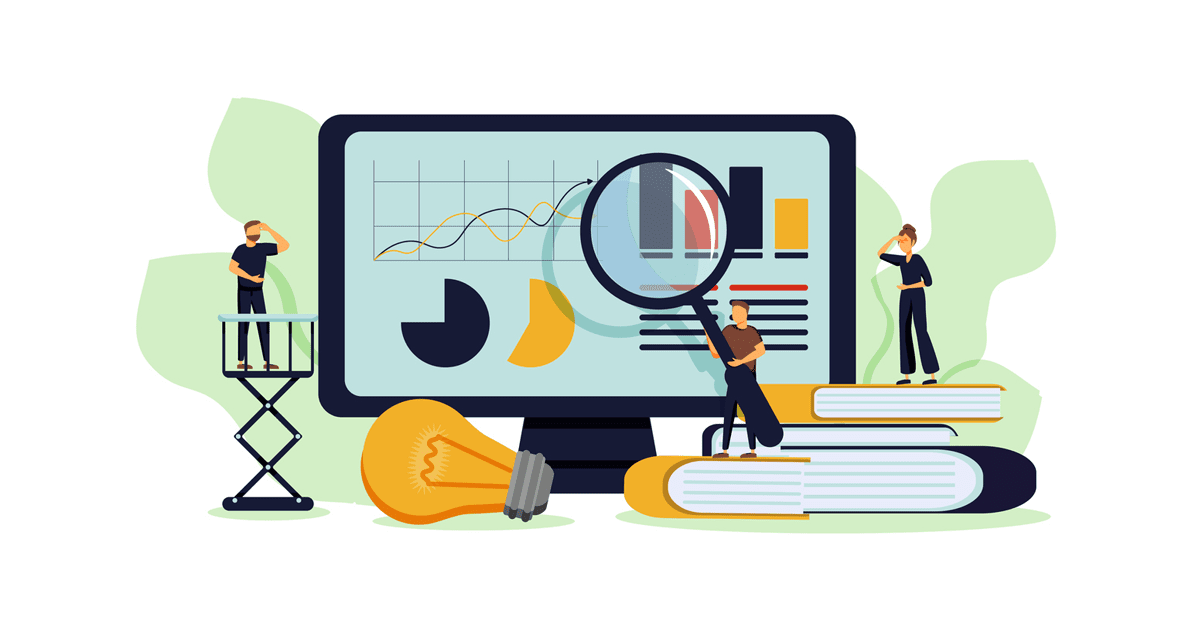Here are 5 steps for digital performance analysis
We’re all aware that a good marketing strategy includes performance metrics. That’s why it’s so important to analyze your digital performance when aiming for successful projects.
Besides collecting data from your channels to evaluate, you need to understand how the results contribute to your company goals and business on a larger scale.
After all, good digital marketing performance analyses are thorough. They contemplate every stage of the sales funnel, from the very top to closing a sale. Of course, you also need to include the specifics of each company and the channels their strategies include.
We’ve put together this guide to help you analyze your overall digital performance. Keep reading and check out these helpful tips!
5 steps for analyzing digital performance
To help you analyze your digital performance effectively, here are 5 steps to follow. They cover everything from understanding the business and your client’s goals to tools that help. Take a look!
Step 1: Establishing goals and performance indicators
A company’s marketing objectives should guide every digital performance analysis. Establishing goals and indicators to help you gauge whether you’re on the right track is a must.
For example, if the goal is to increase sales, the agency or inbound marketing team might focus on more business opportunities for the sales team.
Regularly monitoring that objective would help you stay on track. But following one goal may not provide clarity on your overall results.
By tracking key performance indicators, you could avoid that scenario. Then, your marketing team can tweak strategies and activities to help you reach your goals.
Read more:
Step 2: Monitor your sales funnel
When it comes to metrics and tracking performance indicators, follow each stage of the sales funnel and the results you’re getting.
After all, every step is relevant to reaching the overall objective. Let’s imagine a company is going for 50 monthly sales. Based on their conversion rate or business history, you would establish the number of:
- Opportunities that the sales team needs to reach that number;
- Leads to nurture for future opportunities;
- Site visits you can convert into leads or opportunities.
Tracking these metrics and others that apply to the sales funnel is paramount. It helps you identify any gaps standing in the way of progress and stopping you from reaching goals.
Step 3: Monitor results from your digital channels
The third step of digital marketing analysis is to evaluate the channels included in your strategy, checking their overall impact performance.
Every channel plays a different role, considering how relevant they are to the sales funnel. Still, each is important for successful results.
So, be sure to check your site performance through organic searches, paid campaigns, and referral traffic. Analyze return on social media and other tools for building relationships with your audience (like e-mail marketing).
These results provide insight into channels with the potential to help you reach your goals and find the best opportunities.
Step 4: Staying ahead
Speaking of better opportunities, we can’t stress enough how important it is to analyze digital performance so you can plan for the future.
Many professionals run into a common problem when analyzing marketing data. They emphasize the past and not the next step. That means they’re stuck with what already happened and don’t always gain valuable insight from their reports.
One of the secrets to a thorough digital marketing analysis is knowing how to use data to plan activities in line with goals to help move your project along gradually. For best practices, it is preferable to take an online digital marketing course to understand digital better and apply it to stay ahead.
Step 5: Invest your time in what matters
Now that you’ve read about the first four steps, it’s time to think about how to optimize the process so you can invest your time in what matters: analyzing and planning for the future.
Based on what we covered, a thorough digital performance analysis considers project goals and key indicators to monitor the channels in your strategy.
Imagine having to collect all that data manually to analyze for insights. Seems like a lot of work, doesn’t it?
But with an efficient report automation tool like Reportei, you can cut the time it takes to gather data considerably. That means you can direct your efforts to interpret metrics results in detail and more conclusively.
Plus, you can create a history for projects and track performance over time. It helps you understand what worked and plan your next steps.
Was our guide on digital performance analysis helpful? Then check out this article for more: Data-Driven Culture: what is it and what are the benefits?





